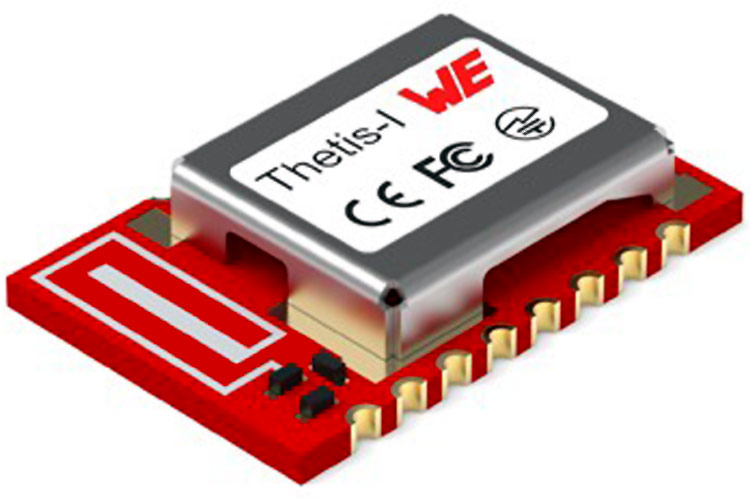Würth Elektronik has introduced a ready-to-use radio module, Thetis-I for Wirepas mesh networks. The latest device from the company is based on the Nordic nRF52840 chipset and the proven proprietary 2.4 GHz radio module. Perfect for IoT applications, this radio module is optimized for Wirepas networks and is extremely energy saving, and offers the choice between low-energy and low-latency modes.
The module measures 8×12×2 mm and can be configured remotely using the freely available Wirepas Commander software. It supports authentication and encryption, stand-alone or host-controlled operation. A wide range of potential applications can be tested using the Evaluation Kit. There is a slim evaluation board that allows a controller board to be connected for developing applications. Also, the battery-powered sensor board is equipped with the versatile WSEN-PADS pressure sensor and the WSEN-HIDS humidity sensor readily provides an application example for a mesh network.
The devices with a Thetis-I radio module can act as a router, eliminating the need for further infrastructure for mesh communication. With tailored Wirepas Commander software, this kit can be operated and configured directly via PC. Also, there is the Thetis-I Evaluation Kit that comes with an evaluation board, a USB radio stick, and three sensor nodes.
Thetis-I and the Evaluation Kit are now available from stock without minimum order quantities. Individualized firmware versions can also be supplied on request.
Features of Thetis-I Radio Module
- Wirepas routing mesh protocol, optimized for ultra-low energy consumption
- High scalability: Ideal for large IoT networks
- Low-energy and low-latency modus
- Remote nodes' configuration
- Authentication and Encryption
- Standalone or host-controlled operation
- Base or custom firmware solutions
- Nano SIM size: 8 x 12 x 2 mm
- Smart antenna configuration (2-in-1 Module)
- Nordic Semiconductor SoC nRF52840
- +6 dBm TX power (ERP: 4 dBm)
- 1 MB flash memory, 256 kB RAM
- CE, FCC, IC certification
Note: More technical information can be found in the Thetis-I datasheet linked at the bottom of this page and on the Thetis-I module product page.











